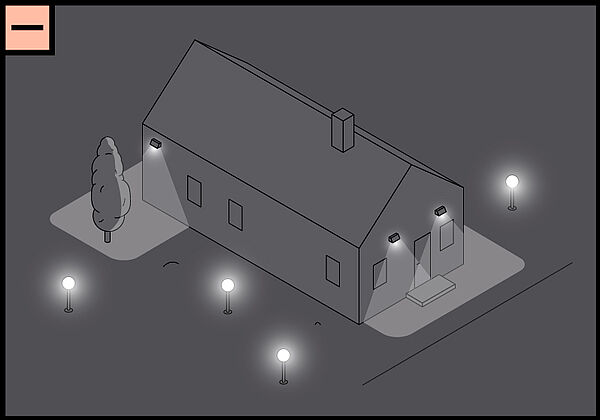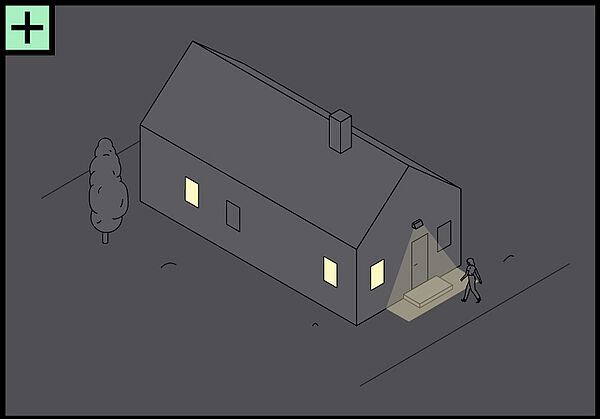Lighting design:
Proper illumination of the target area is important.
As soon as luminaires are obsolete, a lighting designer must be consulted as the lighting system will usually need to be completely replaced.
Positionspapier Straßen‐, Radweg‐, Gehweg‐ sowie Parkplatzbeleuchtung (TEIL 2)
Austrian standards for street lighting
ÖNORM O 1052
Types of luminaires
Lighting Check-up for Tyrolean Municipalities
Night set back and intelligent control systems:
Lighting systems based on the industry codes and true lighting needs can be designed with the help of ÖNORM O 1055. The Austrian standard includes provisions for system set back during periods with little traffic. The use of intelligent control systems is also possible. With such sensor-controlled lighting, luminous intensity is reduced when there is no traffic. The sensors detect any road users and immediately switch to full power as required.
Energy consumption and potential for energy savings in public lighting systems
Carbon dioxide and mercury emissions
Intensity:
Cycle paths and footpaths are assigned to the general lighting class P. At slow speeds (5 to 40 kmh), normal traffic, no parked vehicles at the sides, and low ambient luminance, the requirements of lighting class P5 apply. They correspond to a minimum average horizontal illuminance of 3 lx (maintained illuminance) during operation until midnight.
Floodlit buildings are often to be found in urban centres, where they make a major contribution to the sky glow over the city. But in rural areas, too, floodlighting is often used for historical buildings, including castles and churches, industrial buildings like power plants, and tourist facilities such as cable-car stations. Such lighting installations have major impacts over considerable distances on the natural nocturnal landscape and living creatures.
Where it's done:
According to ÖNORM O 1052, façade lighting is prohibited in legally defined areas as a nature protection measure. In the Tyrol, a permit under nature protection law is required for the installation of outdoor lighting systems.
The aim is to prevent lighting in exposed locations and on high buildings, as it can be fatal to migrating birds and bats. Migratory birds are on the move from mid-February to mid-May and from August to mid-November. Bats arrive in autumn (September) and move to their summer quarters in spring (March, April).
Buildings with bat roosts - at least the exits - are not to be illuminated during the breeding season from May to August. Bats are protected species and must not be disturbed or impaired by artificial light (TNSchG 2005 and TNSchVO 2006). This also applies within the built-up area.
Lighting design:
Professional lighting design is required to ensure that the cone of light does not exceed the area to be illuminated. The luminaire should be positioned as close as possible to the façade, and the light should ideally be directed downwards.
With many listed buildings, changes to the façade are banned and no lighting fixtures may be mounted there. In such cases refined projection or masking strategies (or possibly very narrow-beam spots) can be used. With projector lighting, less than one percent of the light emitted misses the façade. Masking offers illumination in which approx. two percent of the light is lost.
Care should be taken not to illuminate reflective surfaces such as light-coloured walls, metallic surfaces or glass.
Positionspapier Effektbeleuchtung (TEIL 4)
Interference from building floodlighting
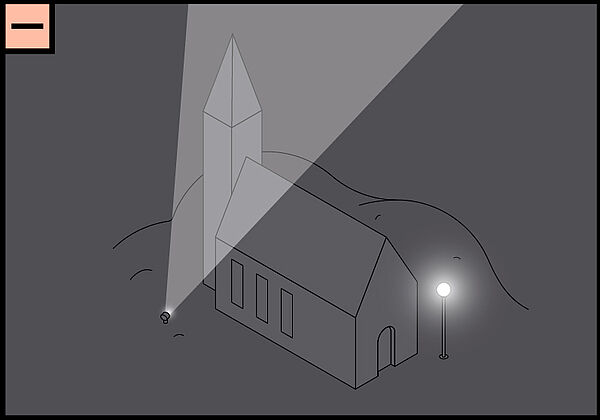
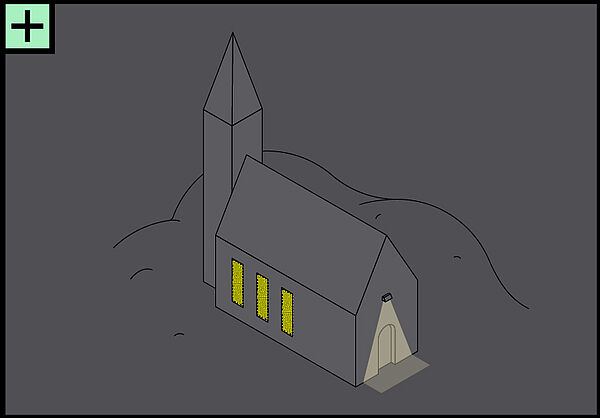
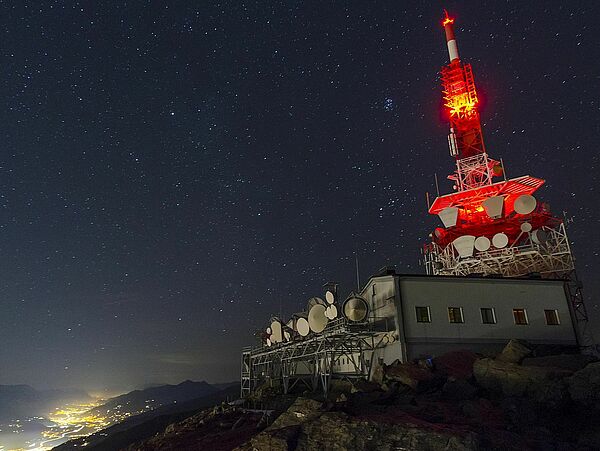

Intensity:
In dark areas, a low level of luminance on the façade or a low contrast between light and dark is sufficient to draw attention to the object. Average façade lighting with a luminance of less than 1 cd/m2 is recommended in the Life at Night project (see below). In areas of low ambient brightness, an average luminance of 0.2 cd/m2 is sufficient.
The objective of the Life+ project is to optimise the illumination of historical buildings in terms of energy efficiency and environmental friendliness.
Leisure activities and training sessions are increasingly being held during the hours of darkness. The lighting required for such purposes increases light immissions in both residential areas and the open countryside. This can have adverse effects on residents, endanger road users and cause problems due to unwanted light in the environment.
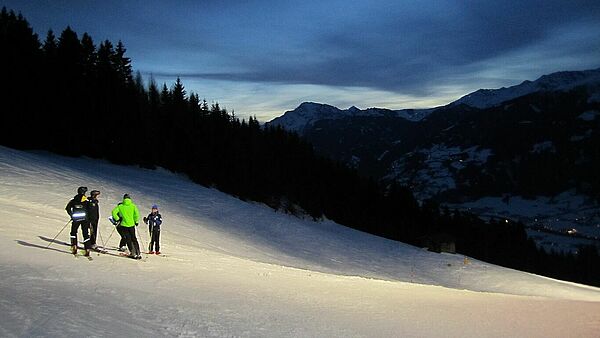
Night-time switch off:
In the open country and rural residential areas, night-time switch off pursuant to ÖNORM O 1052 should begin at 10 p.m. In urban areas switch off by 10 p.m. at the latest is desirable in the interest of local residents.
For lifts and cable car stations in particular, illumination should be based on operating hours and a night-time switch off beginning at 10 p.m.
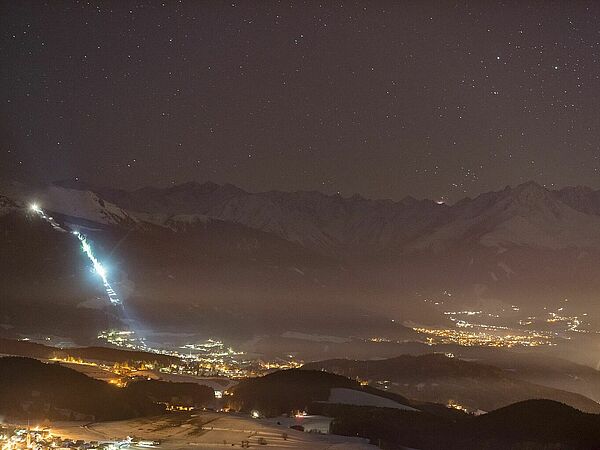
The information folder of the Austrian Institute of sports facility construction provides a valuable overview of the standards and set of regulations to protect residents, the environment and road users of disturbing light immissions.
ÖISS-Informationsfolder Lichtimmissionen - Sportstättenbeleuchtung
The position paper on sports and leisure facilities lighting contains proposals from the Office of the Tyrolean Ombudsman for the Environment for the careful use of artificial light.
Positionspapier Sportstättenbeleuchtung (TEIL 3)
The following information for Tyrolean municipalities and clubs was prepared in 2022 by the Tyrolean Environmental Ombudsoffice in cooperation with the Tyrolean Football Association; the initiative was supported by ÖISS.
Lichttechnische Anforderungen für Spiele der 4. bis 9. Leistungsstufe (ohne TV-Übertragung)
Austrian regulations for sports facility lighting
Interference from lighting systems for sports and leisure facilities
Lighting design:
Targeted lighting of the useful area is important.
Austrian Standard for Outdoor Workplace Lighting
Interference from illuminated construction sites and commercial and industrial premises

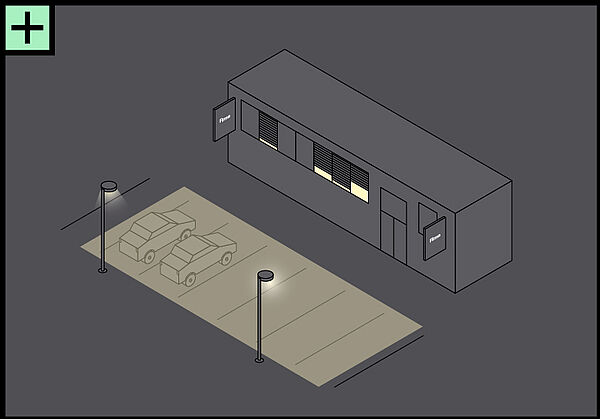
Light captures people’s attention. That makes it ideal for the purposes of the advertising industry. In order to catch the eye, advertising installations are becoming bigger and brighter. Increasing use is also being made of moving images.
Intensive shop and display lighting contributes to light glow in urban areas. In the context of the “Light over Vienna” project (see below), it was calculated that total light glow can be attributed in equal measure to shop lighting, façade lighting and street lighting.
Where it's done:
In accordance with ÖNORM O 1052, illuminated advertising is not permitted in legally defined areas for reasons of nature protection. Luminous or illuminated advertising systems should not be used in the open country, either. In the Tyrol, a permit under nature protection law is required for illuminated advertising installations.
Lighting design:
In principle, care should be taken to keep the area as small as possible and to use light characters on a dark background. The height of illuminated advertising installations should also be reduced becasue of the long-distance effects.
Advertising hoardings should be illuminated top-down, and the light cone should remain within the area of the advertisement.
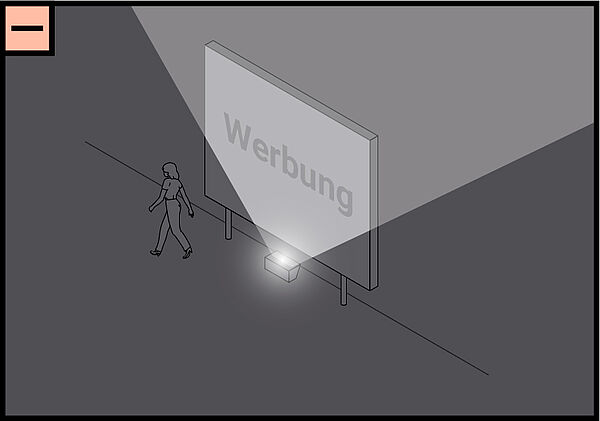
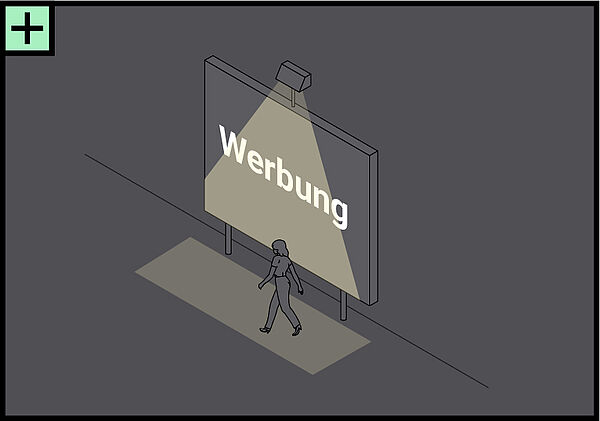
Illuminated advertising installations that are in compliance with the limit values and other legal provisions can still be expected to cause a certain amount of glare and distraction for road users.
Highway Rules and Regulations and the Road Traffic Act
Interference from illuminated advertising
Light architecture is a discipline in its own right. It is used to create lighting spaces where people like to be, especially in urban areas. In keeping with the saying “Darkness is what makes light visible”, the intelligent use of artificial lighting can make a positive contribution to the aesthetics and atmosphere of a city.
But the excessive use of artificial light can quickly produce the opposite effect and lead to a state of unrest. The distinction between effect lighting and illuminated advertising is blurred, as they are both meant to attract attention.
Where it's done:
In accordance with ÖNORM O 1052, illuminated advertising is not permitted in legally defined areas for reasons of nature protection. Exaggerated effect lighting (such as light shows) should not be used in the open countryside, rural residential areas or urban areas except for short and defined periods.
Positionspapier Effektbeleuchtung (TEIL 4)
https://www.umweltberatung.at/sparsame-weihnachtsbeleuchtung
Festive Light Code (EN MK Illumination & Tiroler Umweltanwaltschaft - Projekt SKYSCAPE)
Skybeamers as a bird trap
Richtlinien und Vorschriften für das Straßenwesen und Straßenverkehrsordnung
Störung durch Effektbeleuchtung
Energie- und kostenintensive Weihnachtsbeleuchtung
Lighting design:
Lighting in the garden, on the terrace or outside the front door should only be used where and when it is really needed. Targeted light should be limited to the area to be illuminated.
Out of consideration for other people living in the area, too, façade and effect lighting and decorative lighting installations should not be used.
Outdoor lighting alone has no deterrent effect on burglars
Energy and cost-intensive Christmas illuminations
Lassen wir die Nacht im Garten, Wiener Umweltanwaltschaft und Umweltberatung
